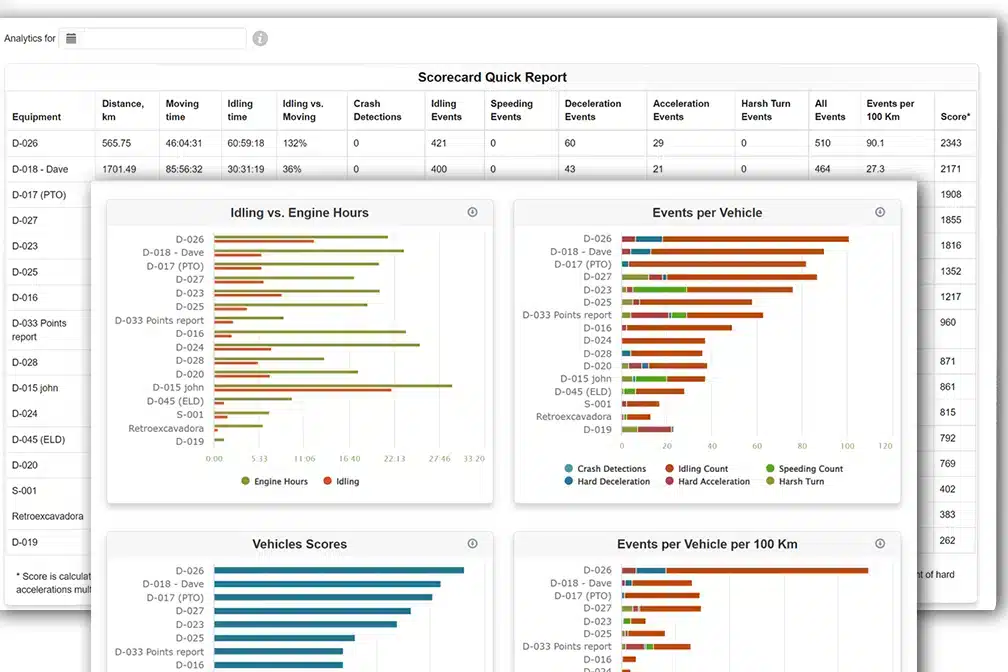Germany-Based Quantron Aims to Lead the Charge with Zero-Emission Trucks in North America's Evolving Commercial Trucking Landscape.
More
May 19, 2024 8:12 pm

Driver scorecards are tools used in the trucking industry to monitor and evaluate the performance of drivers. These scorecards typically provide a numerical rating for drivers based on a variety of factors such as safety, fuel efficiency, and compliance with regulations.
Driver scorecards can be generated using data collected from various sources, including GPS tracking systems, onboard computers, and telematics devices. The scorecard can provide feedback on driver behavior, such as excessive idling or harsh braking, as well as compliance with regulations such as hours of service and vehicle inspection requirements.
By using driver scorecards, trucking companies can identify areas where drivers may need additional training or coaching to improve their performance. The scorecards can also be used to reward high-performing drivers and identify those who may pose a risk to safety or compliance.
The greatest advantage of using driver scorecards for a trucking company is that it can help to improve the overall safety and efficiency of their fleet. By tracking and evaluating driver performance, companies can identify areas where their drivers may need additional training or coaching, which can help to reduce accidents and minimize costly repairs and downtime.
Driver scorecards can also help companies reduce their fuel costs by identifying drivers who are consistently driving in a way that is less fuel-efficient, such as excessive idling or hard acceleration. By providing feedback and coaching to these drivers, companies can help them adopt more fuel-efficient driving habits, which can result in significant cost savings over time.
Another advantage of using driver scorecards is that they can help to ensure compliance with regulations and industry standards. By tracking compliance metrics such as hours of service and vehicle inspection requirements, companies can help minimize the risk of fines and other penalties associated with non-compliance.
Opinions among OTR (over-the-road) drivers about driver scorecards can vary. Some drivers may view driver scorecards as a helpful tool for tracking their performance and identifying areas where they can improve. By having a clear understanding of their performance metrics, drivers can work to improve their driving habits and potentially increase their earning potential through bonuses or incentives offered by their employers.
However, other drivers may view driver scorecards as an intrusive form of monitoring that doesn’t take into account the real-world challenges and complexities of their job. Some drivers may also feel that driver scorecards are being used more as a punitive measure than as a tool to help them improve.
In general, how drivers feel about driver scorecards may depend on factors such as how the scorecard is used by their employer, the specific metrics being tracked, and the level of transparency and communication between drivers and management. When used fairly and transparently, scorecards can be used by trucking companies to promote safer and more efficient driving practices, reduce costs associated with accidents and violations, and improve the overall performance and profitability of their fleet.
Germany-Based Quantron Aims to Lead the Charge with Zero-Emission Trucks in North America's Evolving Commercial Trucking Landscape.
MoreFor as long as trucks have roamed our highways, a persistent challenge has plagued the trucking industry: the inefficiency caused by the gap between the cab and
MoreIn an industry where safety and efficiency are paramount, AI Driver-Facing Dash Cameras have sparked a lively debate. Through the lens of trucker forum discussions, we delve
MorePresident Biden's seeks to invest in clean energy, create green jobs, and establish the United States as a leader in
MoreUPS' Acquisition of Happy Returns Streamlines Returns for Truck Drivers, Reducing Hassles and Improving Efficiency in E-Commerce Logistics.
MoreThe sedentary nature of long-haul truck driving can have both positive and negative effects on the health and well-being of
MoreAs a truck driver, you possess a wealth of knowledge and firsthand experiences that are valuable not only within your
MoreOn August 19, Old Dominion Freight Line Inc., trucking company offered $1.5 billion to acquire Yellow Corp. 's 169 terminals
More